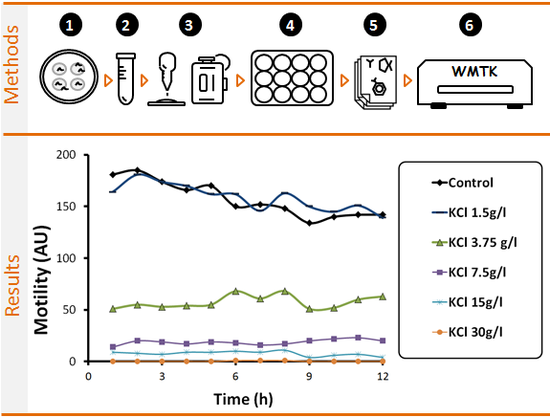

Animal behavior depends upon integrated processes at the subcellular, cellular, and organismal level, and thus is susceptible of disruption by a broad spectrum of chemicals. Locomotor behavior (movement) of the small free-living nematode C.elegans has proven to be useful in assessing toxicity. We can find literature about it in the field of Ecology, Pharmacology, Nanotechnology, Agrochemistry, drug development and many others.
Toxicity measures are easily implemented using our WMicrotracker system. Below you'll find a procedure example.

In this experiment we can observe the effect of increasing concentrations of KCl in young adults N2 C.elegans. The recording of 12h of activity shows an immediate effect of this salt on behavior and deleterous effect at doses higher than 3.75g/l. Control worms were cultured in K buffer (32 mM KCl, 51 mM NaCl. Ref: Williams P).